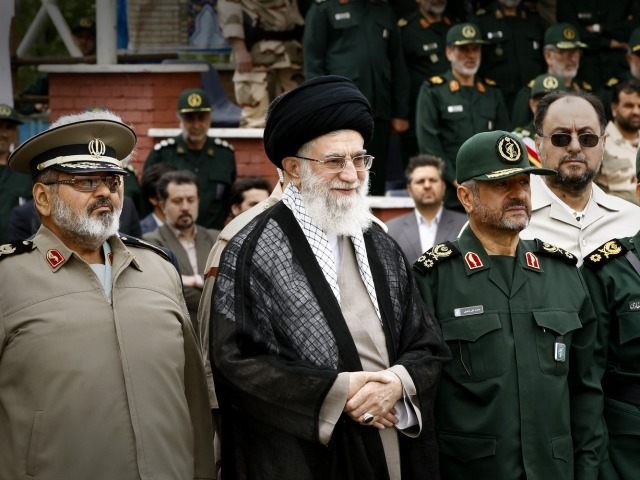Less than 24 hours after the U.S. Department of Treasury sanctioned Iran’s Islamic Revolutionary Guard Corps (IRGC) as a terrorist organization, Iran’s Foreign Minister Mohammad Javad Zarif claimed, “Iranians–boys, girls, men, women–are ALL IRGC.”
The IRGC is known as Sepah-e Pasdaran-e Enqelab-e Eslami in Persian:
However, many Iranians – both living in the Islamic Republic and throughout the world – disagreed and rejected Zarif’s claim, creating the #WeRejectIRGC hashtag on Twitter in response. Some stated, contrary to Zarif’s tweet, that it is the IRGC that carries out acts of terror, both directly and through its proxies throughout the Middle East.
The IRGC boasts a long history of attacks against Iranians:
- 1990: On March 14, 1990, the IRGC attempted to assassinate Hossein Abedini, an Iranian parliamentarian in exile and a member of the Foreign Affairs Committee of the National Council of Resistance of Iran (NCRI). The IRGC operatives blocked the vehicle he and his driver were in on his way to the Istanbul Airport in Turkey. Abedini was shot and went into a coma for 40 days. He ultimately survived the attack.
- 1990: On April 24, 1990, 13 Iranian terrorists carrying service passports issued by the Iranian Foreign Ministry assassinated Professor Kazem Rajabi, the representative of the National Council of Resistance of Iran (NCRI), by gunning him down near his home in Geneva, Switzerland.
- 1992: On June 5, 1992, Iranian agents kidnapped Ali Akbar Ghorbani, a member of the Mujahedin-e Khalq (MEK), in front of his home in Istanbul, Turkey, and tortured him to death. A captured terrorist led the police to his shallow grave on the outskirts of Istanbul.
- 1993: On March 15, 1993, Mohammad Hossein Naghdi, the representative of NCRI, was assassinated by IRGC operatives as he drove to his office in Rome, Italy.
- 1996: On February 20, 1996, terrorists dispatched from Tehran assassinated Ms. Zahra Rajabi, a senior member of NCRI, in her home in Istanbul, Turkey. She had gone to Turkey to assist Iranian political refugees. Her colleague, Abdul Ali Moradi, was also fatally shot.
- 2009: In June 2009, a member of Iran’s security service assassinated Neda Agha Soltan as she stood in the streets of Tehran during the Green Revolution sparked by protests against Mahmoud Ahmadinejad’s fraudulent reelection to the presidency. Iran’s Basij paramilitary forces were accused of brutally suppressing protests in the aftermath of that infamous election.
Iran’s President Hassan Rouhani praised the IRGC just before the United States’ designation of the group – which is the financial lifeblood of the Iranian regime – as a terrorist organization, saying, “If the United States wants to commit another mistake and take action against the Revolutionary Guards, this is a bigger mistake; the Revolutionary Guard is not just a military unit, but the Guards are in the hearts of this people.”
Adelle Nazarian is a politics and national security reporter for Breitbart News. Follow her on Facebook and Twitter.

COMMENTS
Please let us know if you're having issues with commenting.